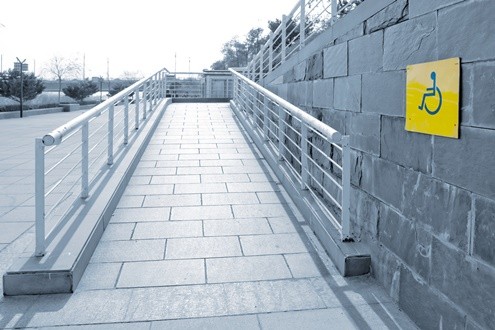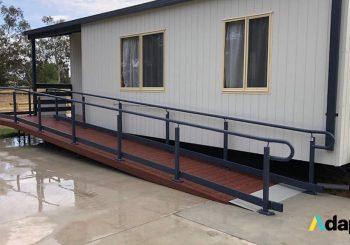People with disabilities and limited mobility require special access provisions to enter a building or navigate different spaces.
Public buildings and institutions are required by law under the Disabilities Discrimination Act to ensure their property is accessible to such individuals. Here’s a look at what you need to know about the DDA guidelines to ensure your property is compliant.
Which Places are Considered Public?
All properties should provide disabled access, especially if disabled individuals are more likely to use them. However, not all properties are legally obligated to provide this access. Here’s a look which properties are required by law to do so:
- Educational Institutions
- Government Institutions and Organisations
- Sporting Venues and Clubs
- Shops and Department Stores
- Cafés, Bars, Restaurants, and Fast Food Joints
- Banks and Other Financial Institutions.
- Libraries
- Hospitals, Dentist Clinics, Doctor’s Clinics, and other Medical Establishments.
- Hair Dresses and Beauty Salons
- Theatres, Gaming Arcades, Concert Halls, and other Entertainment Establishments
- Public Transport Installations
- Legal Service and Law Offices
DDA applies to places that are under construction as well as structures that already exist. Some buildings might need to be modified under this law but an exception can be made if there’s unjustifiable hardship involved in accessing the property.
What Does This Law Require?
DDA mandates that every area that is open to the public must provide good access. The general public, as well as disabled individuals, should have equally comfortable experiences on the property. Here’s a look at the expectations:
- Places open to the public should have easy, clearly marked entry and exit routes.
- All outdoor elevators spaces with stairs should provide a wheelchair-friendly ramp alternative that people with mobility issues can use
- The ramps should be made according to established building code standards so they shouldn’t be too steep or difficult to use. Standard ramp steepness is 1:12 for public areas so one unit of elevation requires 12 units of length.
- Every ramp should have a railing for additional support. This ensures people have something to hold on to when they use the ramp.
- Ramps should have enough landings at turning points so people in wheelchairs have enough room to turn around.
- These structures should also be installed indoors near small flights of stairs if there are no elevators available.
These are some of the many provisions you can take into account to make a space more comfortable for disabled individuals. Implementing this might be a slow process, but it ensures no one has to struggle.
Examples of Improvements Caused by DDA
Some establishments have already carried out all the needed improvements at the request of people with disabilities. Examples of improvements include:
- Ramps and altered stairways at entry points of all educational and government institutions for better accessibility.
- Railings to provide better support.
- Ramps in banks and ATMs to provide customers with easier access to their money and banking services.
- Landings on long or relatively steep ramps to provide disabled individuals with some rest during the climb.
Making changes under DDA guidelines can take time but it is important for property owners to attempt it. Sometimes these changes aren’t possible without significant expense and effort, which some property owners can’t afford. In such cases, property owners should consider all their available options carefully, discuss with disabled individuals, consult with experienced professionals in this field, before deeming it an “unjustifiable hardship”.
If you want to know more about DDA guidelines for access or need any more information about our ramp systems, don’t hesitate to get in touch with us at Adapta. You can call 1800 232 782 or contact us through this form.



